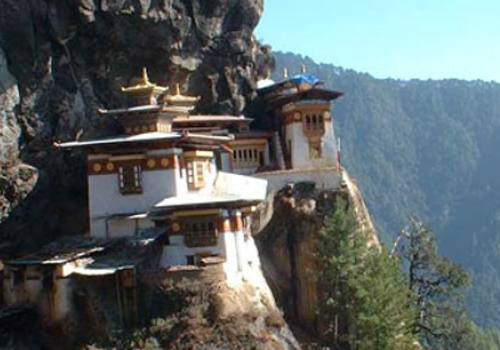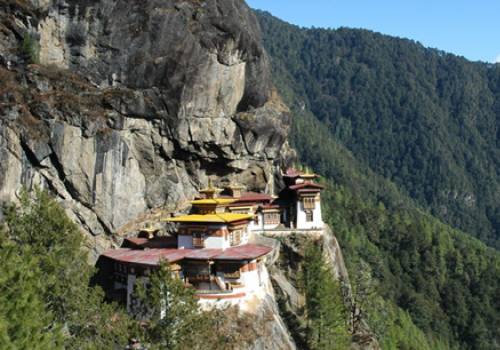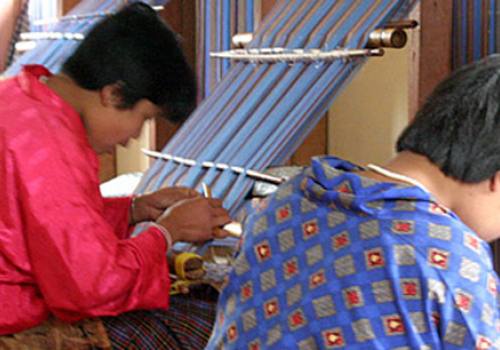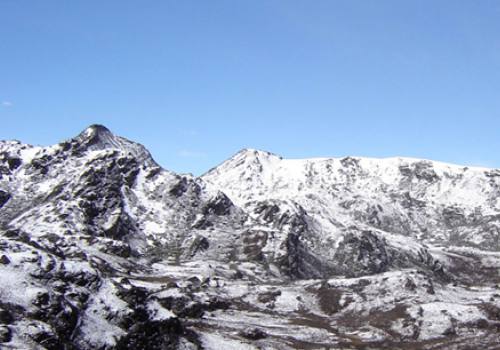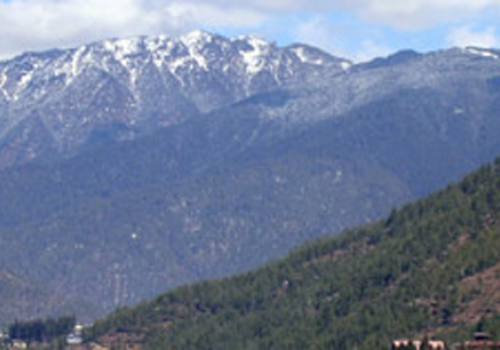Beautiful Laya also in popular in different names such as Lingshi Trek or Laya Lingshi trekking is one of the most popular trekking trips in Bhutan. It is one of the frequently organized trekking packages by the Thin Air Adventure team in Bhutan. Laya Lingshi trekking trip is a three week long trekking trip. It is considered to be one of the most scenic, wild and culturally fascinating trekking trips in Bhutan. This is one of the most demanded trekking trips among the clients of Thin Air Adventure as because it is a kind of Bhutan round trip. Moreover, during the trip you will not only explore the capital cities both the old and the newer one, also you will have an opportunity to explore the remote parts of the country. Similarly, you will also have tour the high mountain passes, where you will be amazed with the incredible landscapes, unique culture, rituals of various ethnic groups residing alongside of the trail, ancient arts and architecture, monasteries, scenes and sceneries, diverse flora and fauna and what not all these features have made Laya Lingshi trekking package to be the most demanded by many travelers visiting in Bhutan.
Laya Lingshi trekking trip is also regarded to be one of the most challenging and difficult trips in Bhutan. This trekking trip is challenging as because, it entails of crossing at least four high passes beginning from Paro, airport. The hiking initially leads you to Chomolhari base camp and then climbs over Nyele La pass, the first pass. And then, the trip takes you down to the remote valley called Lingshi, which is said to have resided by Lingshi Dzong along with a dozen of monks, some 500 years ago. Subsequently, the trail takes you to Sinchey La, the highest pass you encounter during the trekking and finally, your trekking trip continues down to mountain village called Laya after exploring of scenic beauty, cultural richness of the area, you continue your journey to Punakha, (the ancient capital city) and then Thimphu, the capital city and after making an excursion all around, you will then return back to Kathmandu.
Outline Itinerary:
- Day 01: Arrive Paro (By Druk Air):
- Day 02: Paro
- Day 03: Paro, Excursion to Taktsang Monastery:
- Day 04: Paro – Shana (Start of Trek):
- Day 05: Shana Thangthangka
- Day 06: Thangthangka Jangothang
- Day 07: Jangothang (Halt)
- Day 08: Jangothang – Lingshi:
- Day 09: Lingshi – Chebisa
- Day 10: Chebisa – Shomuthang
- Day 11: Shomuthang – Robluthang
- Day 12: Robluthang – Lemithang
- Day 13: Lemithang – Laya
- Day 14: Laya (Halt)
- Day 15: Laya Koena
- Day 16: Koena GasaTsachu
- Day 17: Gasa Tsachu Goen Damji
- Day 18: Goen Damji Punakha (End of Trek)
- Day 19: Punakha Thimphu: (72 Kms)
- Day 20: Thimphu Paro
- Day 21: Paro – Airport:
Cost Includes
- Hotel in Thimpu on F/B on twin sharing basis
- Sightseeing as per itinerary
- Man Power: Guide, Cook, Sherpa, Kitchen boys, helper, porters
- Food during the trek 3 meals a day
- 2 men tent, mattress, all camping gear except sleeping bag, dining tent, kitchen tent, toilet tent, table & chairs
- Hotel-airport-hotel transfers
Cost Excludes
- Flight: Kathmandu-Paro-Kathmandu as per itinerary
- Personal equipments
- High risk medical insurance
- International air ticket, airport tax
- Alcoholic beverages & telephone calls
- Visa fees, emergency rescue evacuations if needed
Detail Itinerary
- Day 01 :Arrive Paro (By Druk Air): The flight into Paro on our national carrier, Druk Air, is a befitting introduction to the spectacular beauty of our country. In clear weather, magnificent views of the world’s highest peaks, give way to the lush green Paro valley as you land. Your Bhutanese escort from Yak Adventures Travel will greet you on arrival, and then drive you the short distance to the Hotel.
- Day 02 :Paro Your journey into the Thunder Dragon kingdom will begin with a drive in the morning to the ruins of the Drukgyal Dzong 16 km up the valley. Built in 1647 by the great Shabdrung Ngawang Namgyal, father and unifier of medieval Bhutan, the dzong was destroyed by accidental fire and left in ruins as an evocative reminder of the great victories it was built to commemorate. Explore the ramparts and on a clear day experience an unforgettable view of Mt. Jhomolhari (7,314 m). On the way back, visit Kichu Lhakhang that was built in 659 by the Tibetan King Srongsen Gampo. Visit is Ta Dzong, an ancient watchtower, which now houses the National Museum. Below the museum is the Paro Rimpung Dzong, the center of civil and religious authority in this valley. A short walk takes you to the base of the dzong and across a traditional cantilevered, covered bridge. A short distance further is one of the innumerable archery grounds (Archery is the national sport of Bhutan). If we are lucky, we may catch a match in action. The evening ends with a walk through Paro´s main shopping district.
- Day 03 :Paro, Excursion to Taktsang Monastery: A very special day, with an excursion to view the spectacular Taktsang (Tiger´s Nest) monastery After breakfast a short drive takes us to Satsam Chorten, from there a 2 hour horse ride till the viewpoint point of the monastery. The trail climbs through beautiful pine forest, many of the trees festooned with Spanish moss, and an occasional grove of fluttering prayer flags. We stop for a rest and light refreshments at the Taktsang Jakhang (cafeteria) and then walk a short distance until we see, clearly and seemingly within reach, Taktsang monastery. Built in the 1600s, this incredible monastery clings to the edge of a sheer rock cliff that plunges 900 m into the valley below. Legend has it that Guru Padmasambhava, the tantric mystic who brought Buddhism to Bhutan, landed here on the back of a flying tiger. Lunch will be served at the cafeteria, followed by a short walk to Satsam Chorten for the drive to the hotel.
- Day 04 :Paro – Shana (Start of Trek): Our trek to Shana starts at Drukgyal Dzong following the Paro River and we pass cultivated fields and tiny picturesque villages. The forests are alive with numerous birds and brightly colored butterflies. Overnight at camp Shana. Altitude 2,820m; Distance14Km; Time 5 6hours.
- Day 05 :Shana Thangthangka The trail follows the river through a heavily forested area with a few isolated farmhouses. It narrows and closes in and the trail winds up and down along the drainage. We pass a junction enroute, where another path leads north over the Tremo La to Tibet. Camp is in a meadow with a stone shelter. Altitude 3610 m; Distance 21 Km; Time 7 8hours.
- Day 06 :Thangthangka Jangothang In the morning after passing a small army post, the trail slowly leaves the forest line and gradually climbs into a beautiful valley, passing Tegethang, a winter home of yak herdsmen. Lunch will be served in one of these huts. Lots of yaks will be seen today before we arrive at the Jhomolhari base camp (4,115 m). High mountains overlook the camp and visible nearby are the ruins of an old fortress used to guard Bhutan against Tibetan invasions. Altitude 4,115 m; Distance 15 Km; Time 5 6 hours.
- Day 07 :Jangothang (Halt) A rest day. A chance to acclimatize and walk up to the Jhomolhari glacier or to the lakes in the opposite direction.
- Day 08 :Jangothang – Lingshi: A good day’s walk today with spectacular views of the Jhomolhari, Jichu Drake and the Tserim Gang. We start climbing straight away and after some 3 to 4 hours reach the Nyelela pass (4,700 m). After the pass we descend to a circular hut just below Lingshi, where we camp. Coming down from Lingshi we obtain our first views of the truly mystical Dzong atop a high hill. Altitude 4000m; Distance 17 kms; Time 6 7 hours.
- Day 09 :Lingshi – Chebisa This is a magical day. Leaving Lingshi behind we gently climb gently to reach another delightful village, Gom Yu, which is set right below a 300 m cliff. Another hours walk brings us to a lovely little valley with a huge waterfall at one end of the Shangri La village of Chebisa, where we camp by the side of the river. The walk is very leisurely with plenty of reasons and opportunities to linger. Altitude 3,780m; Distance 12 kms; Time 4 5 hours.
- Day 10 :Chebisa – Shomuthang We start with quite a stiff climb through high pastures up the Gokula pass (4,320 m) before we drop through forests of dwarf rhododendron. We climb gradually and head down to the camp near a riverbed. Altitude3, 890m;Distance17kms; Time 6 7hours.
- Day 11 :Shomuthang – Robluthang A long haul over the Jarela pass at 4,640 m where we once again get stunning views of the Himalayan mountains above us. We drop steeply down a forest trail to the Tsarigathang valley, where herds of Takin roam, then cross a knee deep river before climbing up Robluthang where we camp. Altitude 4,100m; Distance 22 kms; Time 7 8 hours.
- Day 12 :Robluthang – Lemithang This is one of the hardest days of the trek. We climb slowly up to Shinchela pass at 4,870 m. and are rewarded with stunning views of mountains, including the spectacular Gang Chen Ta at the head of the valley. On a clear day practically all the mountains on the northern border are visible. Eagles, griffin vultures, blue sheep and yaks abound in this area. We descend down to camp on a lovely spot by the riverbank. Altitude 4,040m; Distance kms; Time 6 7hours.
- Day 13 :Lemithang – Laya We walk along the river, one of the tributaries of the Mochu and through a forest of rhododendron and silver fir and then enter the village of Laya. The people of Laya are famous for they’re vertical stripe yak hair clothing and their strange conical bamboo hats. The women wear their hair long and with great deal of turquoise and jade jewelry. The features of the people are even more Tibetan/ Mongolian than the Bhutanese who live in the central valleys The rest of the day is spent at leisure or visiting village houses and mixing with the villagers. Good views of the Masagang and the other peaks. Altitude3, 880m;Distance10kms; Time4 5hours.
- Day 14 :Laya (Halt) We have a rest day at Laya and an opportunity to meet the local people
- Day 15 :Laya Koena The rail winds along the river valley offers breathtaking views of the crashing river, feeder streams and waterfalls. Over night at camp. Altitude3,300m;Distance19kms; Time 6/7hours.
- Day 16 :Koena GasaTsachu We gradually climb up to Balela pass at 3,740 m and then descend to Gasa village. The first sight of the Gasa Dzong perched on the hillside over the village is one of the sights of the trip. We then drop steeply down to the river for an hour and camp near the Hot Spring a chance for a good, hot bath! Altitude: 2,638m; Distance 15kms; Time: 6/7hours.
- Day 17 :Gasa Tsachu Goen Damji After the climb away from Gasa Tsachu the trail winds through rolling hillsides with the vista of fields, villages and forests of oak and pine. Gasa Dzong will be visible behind you glued to the valley wall, seeming afloat in space. Overnight in camp. Altitude: 2,280 m, Distance 21 kms; Time 7/8 hours.
- Day 18 :Goen Damji Punakha (End of Trek) The trail descends from the high agricultural benches above the Mochu into a lush semi tropical gorge filled with banana trees, creepers and the sight of an occasional monkey. Over night at the hotel.
- Day 19 :Punakha Thimphu: (72 Kms) After breakfast, visit Punakha Dzong built in 1637 by Shabdrung Ngawang Namgyal and is situated between Pho Chu (Male river) and Mo Chu (Female river). For many years until the time of the second king, it served as the seat of the Government. The construction of the Dzong was foretold by Guru Rimpoche, who predicted, “…a person named Namgyal will arrive at a hill that looks like an elephant”. There was a smaller building here called Dzong Chu (Small Dzong) that housed a statue of Buddha. It is said that Shabdrung ordered the architect, Zowe Palep, to sleep in front of the statue, while Palep was sleeping, the Shabdrung took him in his dreams to Zangtopelri and showed him the palace of Guru Rimpoche. From his vision, the architect conceived the design for the new Dzong, which in keeping with the tradition, was never committed to paper. The Dzong was named Druk Pungthang Dechen Phodrang (Palace of Great Happiness). The war materials captured during the battle with Tibetans are preserved here. Punakha is still the winter residence of Je Khenpo and King Jigme Dorji Wangchuk convened the new national Assembly here in 1952.After lunch, drive to Thimphu. Enroute visit Chimi Lhakhang also called Temple of Fertility built by Lama Drukpa kuenley in 17th century.
- Day 20 :Thimphu Paro After breakfast we visit at the Dupthop Lhakhang, one of the few surviving nunneries in Bhutan, and the National Memorial Chorten built in honour of our late King Jigme Dorji Wangchuk. After lunch we shop at the Handicrafts Emporium following which we leave for Paro.
- Day 21 :Paro – Airport: In the morning our Yak Adventures Travel representative will bid you farewell at Paro airport.
Key Information
-
Difficulty Moderate
-
Destination Bhutan

